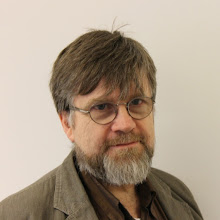
After a lot of elbow grease (most of it from my wife, who generously contributed her domestic skills and cleaning products) the pedals looked much cleaner. They also worked rather better, as I had replaced any badly worn felts, some of which support each pedal laterally between vertical guide pins. Finally, I had stripped off the galvanized brackets which support the operating "tabs" which do the actual switching in the real Hammond Organ (which is why this is a "resurrection" rather than a "restoration").

From this angle, perhaps you can see why I believe the previous owner(s) preferred playing in the key of F!
I wanted to use these pedals in my virtual organ project (Blogs passim), which meant that they had to be able to operate as electrical switches rather than hinged pieces of wood. There are a few technology options here for the organ builder:
- you could arrange for each pedal to touch and operate a miniature switch as in this example
- you could make electrical contact pairs (or one contact per pedal and one or more busses) for each pedal and make a physical switch as in this example.
- you could use an optical method, with a "shutter" tab on each pedal and a opto-detector making the translation from optical intensity to an electrical switch function
- you could use a magnetic method, placing a magnet on each pedal and using a Hall Effect sensor adjacent to each pedal to convert the magnetic field to an electrical switch function
- you could usea magnetic method, placing a magnet on each pedal and using a reed switch adjacent to each pedal to convert the magnetic field to an electrical switch function as in this example
I wanted to use the Hall Effect method, but I couldn't find the sensors cheaply enough (you should know me by now), so I stuck with the trusty, cheap reed switch technology...

You can see the vertical guide rods and the felts, mentioned previously.
I also made up a series of perspex panels (chosen for its transparency, which made alignment with the magnets during "marking up" and subsequent assembly easy), each holding five or seven reed switches. I made brackets to support these panels, mounting under the nut and lock washer that secured the guide pins - the whole process involved no "butchery" of the pedals, except the magnet holes. One of the (five switch) panels is seen, in-situ, below...

I have described previously how my single-octave pedals were wired up and converted to MIDI. The same process was used again - with one significant exception...
The pedals are scanned as a matrix of (4) columns and (7) rows, the last having only one pedal (25 notes takes 6 rows of 4 and a single "extra"). In the previous encoder system, it was known that you could not play more than one pedal in a single column together whilst playing another pedal from another column without the possibility of additional notes sounding. This wasn't seen as a problem as playing two pedals in one "column" constitutes an interval of a minor third or less, which isn't done in the bass register (it is psycho-acoustically and musically meaningless).
However, the geometry of the new pedalboard made it easier for me to arrange that the reed switches should be normally on, switching to open circuit when a pedal is depressed. This meant that, from the point of view of my encoder scheme, all the notes in every column were being "played" most of the time - the system didn't work!
The solution is well-known and simple - you just add diodes in series with each reed switch et voila. Of course, I had to invert the logic of my encoder program (to send a "Note On" command when a reed went open circuit and vice-versa) but that was the work of moments.
Here's the expanded version of my pedal encoder system, capable of running 25 keys (plus seven spares for "toe pistons" or whatever) and the expression pedal...

The trouble with a two octave pedal board is that you need a real organ bench to sit "over" the pedals. Fortunately, eBay came to the rescue again, with a genuine Hammond A-100 bench...

I'm very surprised how easily this went together - I was frightened that the reed switches would be very difficult to set up, but they were easy. Careful location of the magnets (using a jig to drill the pedal ends) and equally careful marking up of the perspex carriers made it work first time.
All I need to do now is get out of the habit of stopping at that formerly top - now middle C!
...-.- de m0xpd
The solution is well-known and simple - you just add diodes in series with each reed switch et voila. Of course, I had to invert the logic of my encoder program (to send a "Note On" command when a reed went open circuit and vice-versa) but that was the work of moments.
Here's the expanded version of my pedal encoder system, capable of running 25 keys (plus seven spares for "toe pistons" or whatever) and the expression pedal...

The trouble with a two octave pedal board is that you need a real organ bench to sit "over" the pedals. Fortunately, eBay came to the rescue again, with a genuine Hammond A-100 bench...

I'm very surprised how easily this went together - I was frightened that the reed switches would be very difficult to set up, but they were easy. Careful location of the magnets (using a jig to drill the pedal ends) and equally careful marking up of the perspex carriers made it work first time.
All I need to do now is get out of the habit of stopping at that formerly top - now middle C!
...-.- de m0xpd









